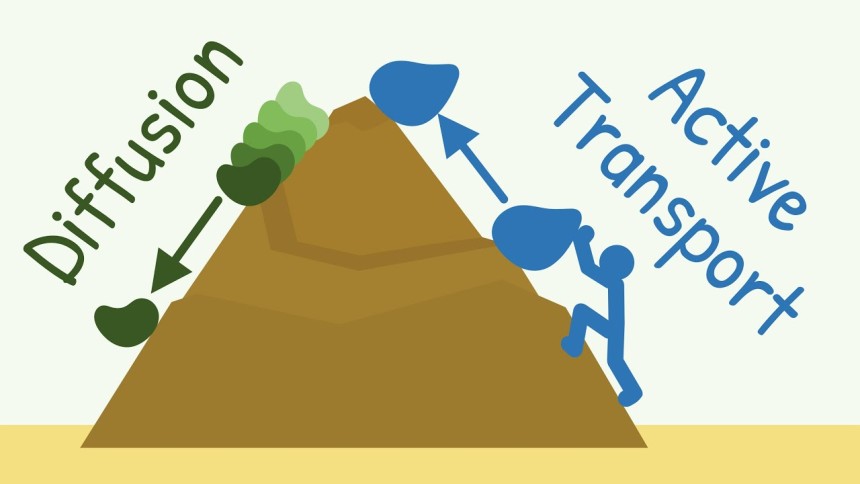
Comparing Diffusion vs. Active Transport
Diffusion vs. Active Transport: When Cells Go with the Flow or Push Against It
To understand the differences between diffusion and active transport, we must first define each process and then explore their mechanisms, energy requirements, and roles in cellular function.
Diffusion is a passive transport mechanism that involves the movement of molecules from an area of higher concentration to an area of lower concentration. This process occurs due to the random motion of particles and does not require any energy input from the cell. The driving force behind diffusion is the concentration gradient, which is the difference in concentration between two regions. Molecules will continue to diffuse until equilibrium is reached, meaning molecules have no net movement in any direction.
Types of Diffusion
- Simple Diffusion, occurs when small, nonpolar molecules (such as oxygen and carbon dioxide) pass directly through the lipid bilayer of cell membranes without assistance.
- Facilitated Diffusion: Larger or polar molecules (like glucose or ions) cannot easily cross the lipid bilayer and require specific transport proteins embedded in the membrane to facilitate their movement across it. This remains a passive process as it relies on existing concentration gradients.
Active Transport
Active transport, on the other hand, is a process that requires energy input to move substances against their concentration gradient—from an area of lower concentration to an area of higher concentration. This energy typically comes from ATP (adenosine triphosphate), which is produced during cellular respiration.
Mechanisms of Active Transport
- Primary Active Transport: In this mechanism, ATP is directly used to transport molecules across a membrane via specific pump proteins. A well-known example is the sodium-potassium pump (Na+/K+ pump), which maintains essential gradients by pumping sodium ions out of cells and potassium ions into cells against their respective concentration gradients.
- Secondary Active Transport (Cotransport): This method utilizes the energy created by primary active transport to move other substances against their gradients indirectly. For instance, when sodium ions are pumped out of a cell (primary active transport), they create a gradient that allows glucose to be co-transported into the cell along with sodium ions through a symporter protein.
Comparison Between Diffusion and Active Transport
- Energy Requirement: The most significant difference between diffusion and active transport lies in energy usage; diffusion does not require energy while active transport does.
- Direction Relative to Concentration Gradient: Diffusion moves substances down their concentration gradient (from high to low), whereas active transport moves substances against their gradient (from low to high).
- Speed and Efficiency: Diffusion can occur rapidly over short distances but may take longer over larger distances or with larger molecules. Active transport can be more efficient for moving specific substances into or out of cells despite requiring energy.
- Role in Cellular Function: Both processes are crucial for maintaining homeostasis within cells. Diffusion helps regulate gas exchange and nutrient absorption, while active transport plays vital roles in nutrient uptake, waste removal, and maintaining ion concentrations necessary for cellular functions such as nerve impulse transmission.
In summary, both diffusion and active transport are essential mechanisms for cellular function but serve different purposes based on whether they require energy input and whether they move substances along or against concentration gradients.




